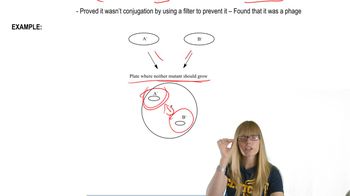Here are the essential concepts you must grasp in order to answer the question correctly.
Scaffold Proteins
Scaffold proteins are essential components in cellular signaling pathways that serve as platforms for the assembly of multiple signaling molecules. They facilitate the interaction between different proteins, ensuring that signaling cascades occur efficiently and accurately. By organizing these proteins in close proximity, scaffold proteins enhance the specificity and speed of signal transduction, playing a crucial role in cellular responses.
Recommended video:
Signal Transduction
Signal transduction refers to the process by which cells respond to external signals, such as hormones or growth factors, through a series of molecular events. This process often involves the activation of receptors on the cell surface, which then trigger intracellular signaling pathways. Scaffold proteins are integral to this process, as they help coordinate the interactions between various signaling molecules, ensuring a precise cellular response.
Recommended video:
Protein-Protein Interactions
Protein-protein interactions are critical for many biological processes, including signal transduction, cellular structure, and metabolic pathways. These interactions occur when two or more proteins bind together, often mediated by specific domains or motifs. Scaffold proteins exemplify this concept by bringing together different signaling proteins, thereby facilitating their interactions and enhancing the overall efficiency of cellular signaling networks.
Recommended video:
 Verified step by step guidance
Verified step by step guidance Verified video answer for a similar problem:
Verified video answer for a similar problem:

